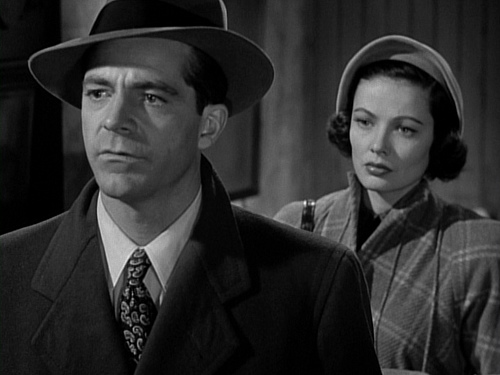
Where the Sidewalk Ends (1950)
Directed by Otto Preminger
20th Century-Fox
What a difference six years makes. Where the Sidewalk Ends reunited Otto Preminger, the director of Laura (1944), with Dana Andrews and Gene Tierney, the two stars of Laura.
This reunion between director and actors was nothing earthshaking. In the years between Laura and Where the Sidewalk Ends, Preminger had worked with both Andrews and Tierney again separately, and Tierney and Andrews had appeared together in the film The Iron Curtain (1948), which Preminger didn’t direct.
But comparing Laura with Where the Sidewalk Ends tells us a lot about where the genre we now know as “noir” went after World War II.
Laura is a glamorous mystery set in Manhattan high society; Where the Sidewalk Ends is a down-and-dirty drama set in the streets of New York, where ordinary people live, work, and die. In Laura, Gene Tierney is an untouchable and barely real object of desire; in Where the Sidewalk Ends, she’s a beautiful but otherwise average young woman with a job who lives with her father. In Laura, Dana Andrews is a tough but decent police detective; in Where the Sidewalk Ends, he’s a police detective whose desire to be nothing like his criminal father leads him to engage in all manner of brutality and occasionally even criminal conduct.
Where the Sidewalk Ends is a great movie about a troubled man finally forced to come to terms with himself. Andrews is excellent in the lead role, as is Tierney, and the supporting cast are wonderful, too, especially Karl Malden as a no-nonsense police lieutenant and Gary Merrill as a mean, sweaty crime boss addicted to nasal spray.



